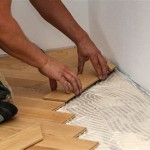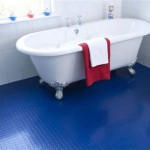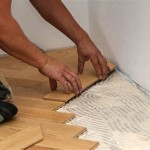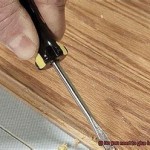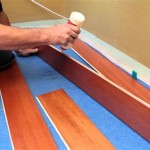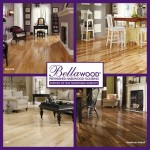Linoleum Flooring: Achieving the Wood Look with Affordable Elegance
Linoleum flooring, often associated with mid-century kitchens, has undergone a significant transformation. No longer relegated to outdated designs, modern linoleum offers remarkable versatility, including the ability to mimic the aesthetic appeal of hardwood flooring. This development provides homeowners with an attractive and cost-effective alternative, combining the visual warmth of wood with the practical benefits of linoleum.
The technological advancements in manufacturing have enabled linoleum to replicate wood grain patterns with impressive accuracy. High-resolution printing techniques and embossed textures now allow for the creation of linoleum sheets and tiles that closely resemble different wood species, from the light tones of maple to the rich hues of cherry. This provides a wide array of design options to suit various interior styles.
Cost-Effectiveness and Budget Considerations
One of the primary advantages of linoleum flooring that looks like wood is its affordability. Compared to genuine hardwood, engineered wood, or even high-end laminate flooring, linoleum typically comes at a significantly lower price point. This makes it an attractive option for homeowners seeking to achieve a specific aesthetic on a budget. The initial cost savings extend beyond the material itself. Installation costs for linoleum are generally lower as well, contributing to overall project savings.
Furthermore, linoleum’s durability ensures long-term value. While hardwood can be susceptible to scratches, dents, and water damage, linoleum is naturally resilient and resistant to many of these issues. This reduces the need for frequent repairs or replacements, further contributing to its cost-effectiveness over the lifespan of the floor.
The cost of linoleum that resembles wood can vary depending on the brand, quality, and complexity of the design. Sheet linoleum is often more budget-friendly than linoleum tiles or planks, but the latter offer greater flexibility in terms of design and installation. When considering the overall cost, it’s prudent to factor in underlayment, adhesives, and professional installation fees, if applicable.
Durability and Maintenance Advantages
Linoleum's composition and construction contribute to its exceptional durability. Made from natural materials such as linseed oil, rosin, wood flour, and limestone, linoleum is inherently resistant to wear and tear. This makes it a suitable flooring option for high-traffic areas, such as hallways, kitchens, and living rooms.
Unlike hardwood, linoleum is naturally water-resistant, making it a practical choice for areas prone to moisture. While it is not entirely waterproof and standing water should still be addressed promptly, linoleum can withstand spills and splashes without warping or staining. This makes it a more forgiving option for families with children or pets.
Maintaining linoleum flooring is relatively simple. Regular sweeping or vacuuming is sufficient to remove dust and debris. For deeper cleaning, a damp mop with a pH-neutral cleaner is typically recommended. Avoid using harsh chemicals or abrasive cleaners, as these can damage the surface of the linoleum. With proper care, linoleum flooring can maintain its appearance and integrity for many years.
The durability of linoleum also extends to its resistance to fading and staining. The color pigments used in linoleum are integrated throughout the material, rather than just applied to the surface. This means that the floor's color will not fade or wear away over time, even with prolonged exposure to sunlight. Additionally, linoleum's smooth surface makes it difficult for stains to penetrate, allowing for easy cleanup of spills and messes.
Design Versatility and Installation Options
The availability of linoleum flooring that mimics wood provides a wide range of design possibilities. Homeowners can choose from various wood species, colors, and plank sizes to create a custom look that complements their existing décor. This versatility allows for seamless integration with different interior styles, from traditional to contemporary.
Linoleum is available in both sheet and tile or plank formats. Sheet linoleum is typically used for larger areas, providing a seamless and waterproof surface. Tiles and planks, on the other hand, offer greater flexibility in terms of design and installation. They can be arranged in various patterns, such as herringbone or staggered layouts, to create a more visually interesting floor.
Installing linoleum can be a DIY project for experienced homeowners, but professional installation is generally recommended, especially for sheet linoleum. Proper subfloor preparation is crucial for ensuring a smooth and level surface. The linoleum must be properly adhered to the subfloor to prevent bubbles or lifting. A professional installer will have the tools and expertise to ensure a flawless and long-lasting installation.
Beyond replicating traditional wood flooring, linoleum can also be designed to mimic other wood-inspired patterns, such as reclaimed wood or distressed wood. These options provide a unique and rustic aesthetic that can add character to any space. The ability to customize the design and pattern further enhances the versatility of linoleum flooring.
Moreover, linoleum’s relatively thin profile makes it suitable for installation in areas with height restrictions. This is particularly beneficial in renovation projects where maintaining existing floor heights is important. The thinness of the material also contributes to its ease of cutting and shaping, allowing for precise fitting around obstacles and edges.
In addition to its aesthetic versatility, linoleum can also be combined with other flooring materials to create unique design features. For example, linoleum wood-look planks can be bordered with linoleum tiles of a contrasting color or pattern to define specific areas within a room. This allows for creative zoning and visual separation of spaces.
When selecting linoleum flooring that looks like wood, it is important to consider the overall color scheme and design of the room. Choosing a wood tone that complements the existing furniture and décor will create a cohesive and harmonious look. Samples should be viewed in the actual lighting conditions of the room to ensure an accurate representation of the color and pattern.
The texture of the linoleum is another important factor to consider. Some linoleum products feature embossed textures that closely mimic the feel of real wood. This adds depth and dimension to the floor, enhancing its realism. Other linoleum products may have a smoother surface, which can be easier to clean and maintain.
Ultimately, the choice of linoleum flooring that looks like wood will depend on individual preferences and the specific requirements of the space. By carefully considering the available options and selecting a product that meets both aesthetic and functional needs, homeowners can achieve the desired look of hardwood flooring without the associated costs and maintenance challenges.
Vinyl Flooring That Looks Like Wood

Style Selections Providence Oak 10 Mil X 12 Ft W Waterproof Cut To Length Vinyl Sheet Flooring In The Department At Com

Linoleum Flooring Pros And Cons Forbes Home

Wood Look Vinyl Sheet Flooring The Home Depot
Vinyl Flooring That Looks Like Wood
Vinyl Flooring That Looks Like Wood

Vinyl Flooring That Looks Like Wood Lx Hausys

Vinyl Flooring That Looks Like Wood Top Picks 2024 Panel Town Floors

What Is The Difference Between Laminate Linoleum And Vinyl Flooring Floor Coverings International

Style Selections Providence Oak 10 Mil X 12 Ft W Waterproof Cut To Length Vinyl Sheet Flooring In The Department At Com
Related Posts


